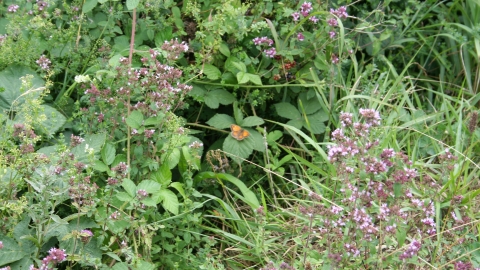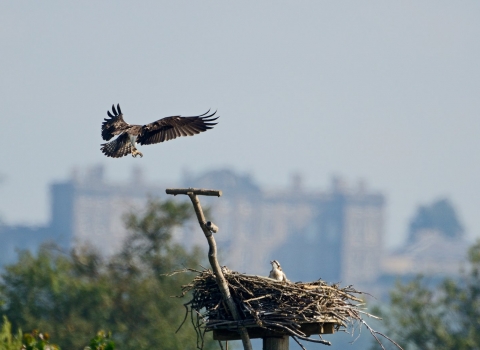Location
Know before you go
Dogs
On a lead when livestock present. Under close control at all other times
When to visit
Opening times
Always openBest time to visit
SummerAbout the reserve
|
A wonderful meeting of nature, people and geology, nature is reclaiming parts of Ketton Quarry, which is still a working limestone extraction site. As the hills and holes have been allowed to recolonise with grassland and woodland, wildlife has crept back in to create a real wildlife hotspot in the east of Rutland. Summer is the best time to enjoy a wander. See what butterflies you can spot in the meadows and in the glades under the trees – marbled white, dingy skipper and grizzled skipper are some of our star species. The site is also home to many rare moths and even glow worms! If you’re lucky, and very quiet, you might spy reptiles basking in the sunshine (spring is best to spot an adder). The wildflowers here add colour and diversity, with bee orchid, cowslip, yellow-wort, autumn gentian, viper's bugloss and carline thistle all thriving. We’re making sure that we let some of the scrub grow wild; whilst scrub can quickly overtake a delicate meadow, it does provide a much-needed habitat for birds like nightingales and turtle doves, which have both been heard in the spring. The beech wood contains the only colony of yellow bird's-nest in Leicestershire and Rutland. Some of the rock faces are kept clear of vegetation to facilitate geological study, however, we have unfortunately had to close the geology trail following rock falls that have made the rock faces unstable. |
Contact us
Environmental designation
Welcome to Ketton Quarry Nature Reserve
Autumn is finally here and we can definitely see this in the beautifully changing colours in this video of Ketton Quarry Nature Reserve. It is very well known that the the best season to visit Ketton is Summer, as the grassland, scrub and woodland make it an excellent site for butterflies, moths, wildflowers and reptiles in the warmer months, but it just goes to show that nature can be beautiful at any time of the year, and Ketton is well worth a visit in the Autumn too.
The reserve is a result of centuries of limestone quarry activity on the site and as such it is an excellent calcareous grassland habitat. That means we can find species such as reptiles (adders in particular) scarce butterflies such as the grizzled and dingy skipper, glow worms and a variety of wildflowers, in abundance.
The Reserve Officer for Ketton Quarry tells us, “Summer is the best time to visit for butterflies, wildflowers and day flying moths. However the beech woodland at the top of the site is one of my favourite places in the autumn and winter, well worth the extra walk to see the dappled light through what’s left of the canopy and the colours of the fallen leaves on the woodland floor below.”


